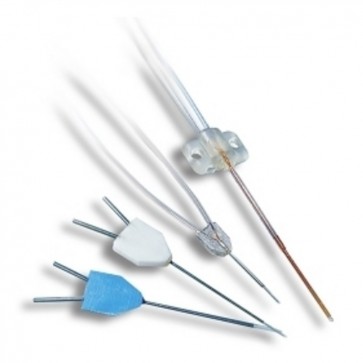NEW! Solutions for Microdialysis of Large Molecules
NEW! SOLUTIONS FOR MICRODIALYSIS OF LARGE MOLECULES
CMA offers new complete solutions for the study of large molecules using the microdialysis techniques.
- New Microdialysis Probes for Large Molecules
- New CNS Perfusion Fluid with Dextran MW 500 kDa 3%
- New Push-Pull Set-ups
NEW! SOLUTIONS FOR MICRODIALYSIS OF LARGE MOLECULES
CMA offers complete solutions for the study of large molecules using the microdialysis techniques.
Why large molecules in microdialysis research?
The use of the microdialysis technique for the recovery of large molecules is of increasing interest as it offers the opportunity to identify patterns of protein expression in a variety of tissue spaces as well as to evaluate useful biomarkers of disease.
From this perspective, the use of this technique contributes to a better understanding of the disease process and its diagnosis, allowing the development of more targeted approaches to therapy.
As an example, microdialysis on large molecules promises to facilitate preclinical Alzheimer’s research, making it easier to target most of the protein biomarkers believed to be related with this disorder that cannot cross the blood brain barrier (β-amyloid, tau proteins and cytokines related to brain inflammation).
The challenges of the microdialysis of large molecules
The use of probes with large pore size membranes required for the microdialysis of large molecules creates some methodological challenges such as protein aggregation, protein adhesion, ultrafiltration and low fluid recovery/extraction efficiency. All these challenges can now be overcome by using appropriate and optimized microdialysis set-ups.
New probes for large molecules!
CMA offers a set of microdialysis probes for the recovery of large molecules (such as proteins, cytokines, growth factors, antibody and neuropeptides…) on awake rodents.
NEW! CNS Probes for Mice
NEW! CNS Probes for Rats
The probes/guides are available as metal free, beta-irradiated (sterile) and custom-made (shaft/membrane length) on demand.
How to avoid Ultra-Filtration and improve Extraction Efficiency?
New! Dextran solution for 55 to 100 kDa High Cut-off Microdialysis Probes
We recommend the use of the CMA Microdialysis CNS Perfusion fluid with Dextran 500 kDa 3% in order to stabilize the pressure within the probe and limit ultra-filtration.
The CNS Perfusion Fluid with Dextran 500 kDa 3% is suitable for our CNS high cut-off probes with 55 and 100 kDa cut-off for rats and mice. The Dextran 500 kDa will not diffuse out of the probe and cause additional tissue inflammation. It is reported the Dextran 500 can give fluid recovery close to 100%.
The solution is sterile, ready to use and non-buffered (so pH would not change).
- See also the Dextran 500 kDa 3% Product Note for more details
- See also our Push-pull Application Note for more details.
New! Push-pull set-up for 500 kDa to 2 MDa Ultra-High Cut-off Microdialysis Probes
The Dextran Dextran 500 kDa 3% solution cannot be used for the 500 kDa-2 MDa Ultra-High Cut-off microdialysis probes because of the large pore size membranes that would let the Dextran pass into the extracellular space and cause inflammation.
One way to avoid ultra-filtration with very high cut-off membranes is to reduce the back pressure caused by the perfusion fluid coming from the probe inlet.
From this perspective, we recommend using the REGLO ICC Peristaltic Pump for Ultra-High Cut-off Probes. We have tested this pump to ensure that the minimum flow rate of the pump (0.1 μl/min) is accurate and that the 12 rollers provide a smooth flow. Flow rate and direction can be individually adjusted for each channel. The pump calibration is easy for the user. A ready to use Peristaltic Tubing Kit is available for fast connection to microdialysis FEP tubing.




